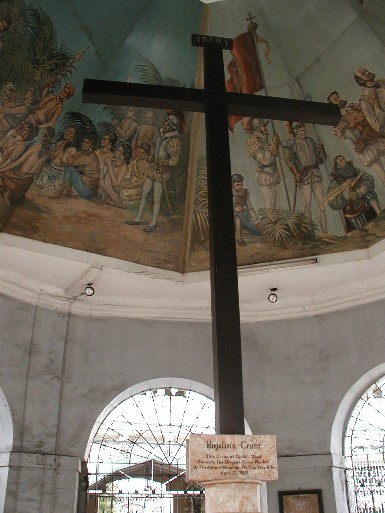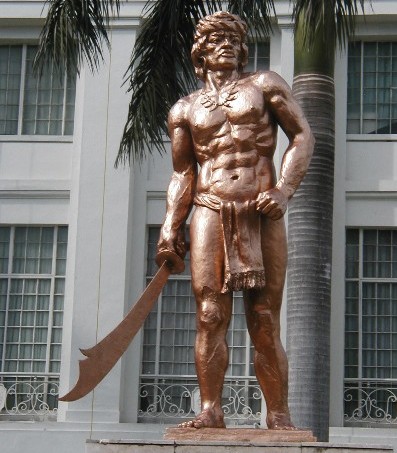
To Christian Filipinos, this cross symbolizes the victory of Jesus Christ in the Far East, particularly in the Philippines.
The cross that we see at the kiosk is but a replica of the wooden cross Ferdinand Magellan and his men planted in Cebu on 14 April 1521 to mark the beginning of the Christianization of the island. The original was destroyed when Cebuanos turned against the Spaniards 17 days later. There is no record as to when the present cross was erected though there are allusions that this was done around 1565.
To the cross was attributed such miraculous powers that the faithful chipped away silvers to take as medicine or to use as an amulet.

It is doubtful that when Ferdinand Magellan of Spain planted a wooden crucifix on Cebu soil in 1521 he had any idea what it would come to symbolise. Magellan was the first of the conquering Spaniards to set foot in the Philippines, the start of a rule that would last 400 years. To celebrate his discovery, Magellan held mass, baptising around 400 locals into the Catholic faith, the now fervently practised religion of the majority of Filipinos. Magellan was killed shortly later and the cross was partially destroyed only to be rebuilt forty years later by Magellan's successor.

To protect the cross, it was encased in another hollow wooden cross. An octagonal brick pavilion was built in 1834 to house the cross.

Lapulapu is considered one of the greatest figures of ancient Philippine History. Besides the fact that his battle with Magellan led to Magellan's death, Lapulapu is honored because he was among the first to reject submission to a foreign power even through Raja Humabon, ruler of the neighboring island of Cebu, and other chiefs recognized the king of Spain as their sovereign and agreed to pay tribute.
On April 28, 1521, Magellan and some sixty of his men battled with the forces of Lapulapu on the shores of Mactan Island. During the battle, Magellan was wounded in the leg. With this, several members of Lapulapu's forces rushed at Magellan and killed him with their spears. With the death of Magellan, the Spaniards retreated to their ships and left.

